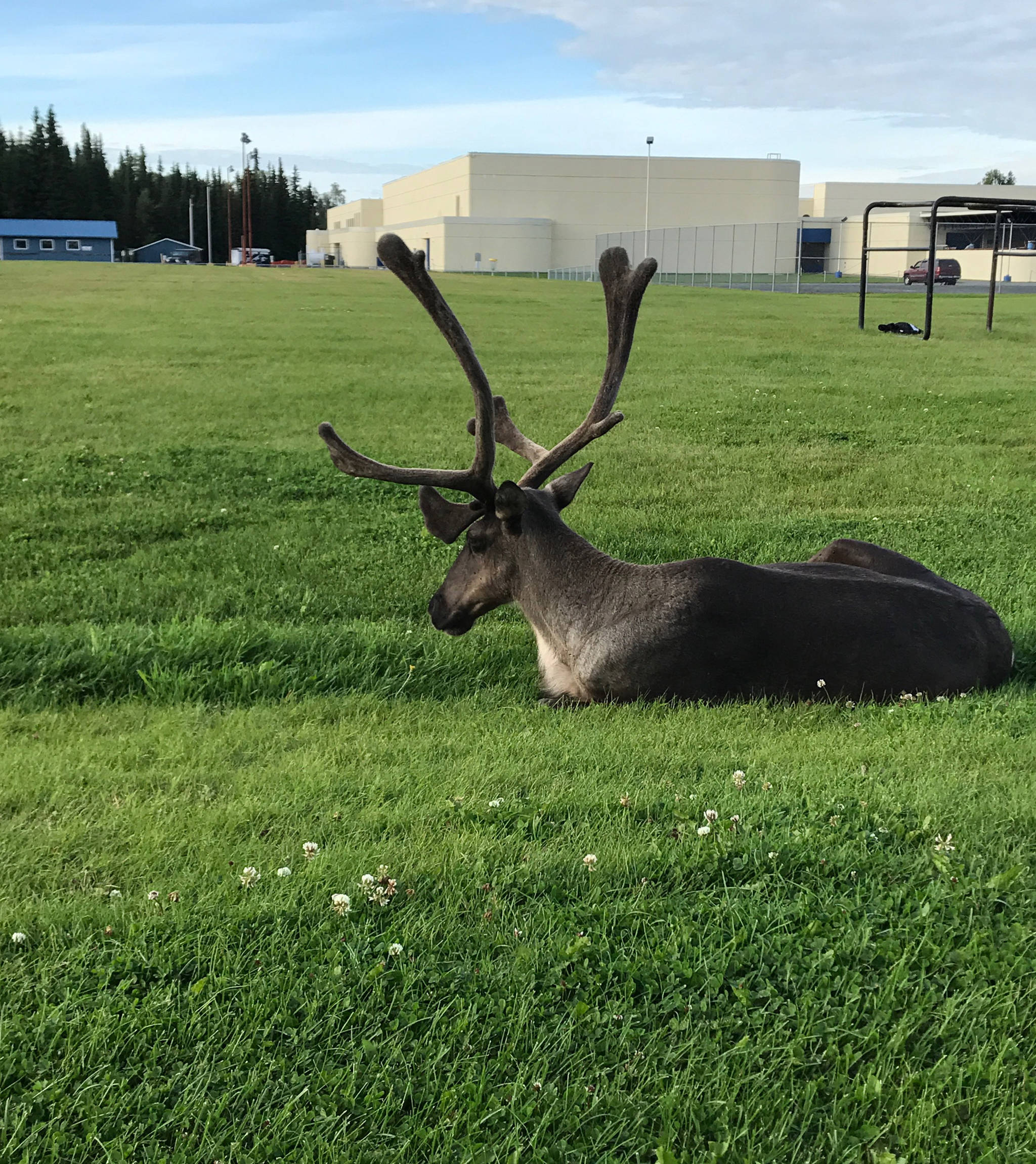A large caribou with antlers reaching high above its head could be seen on the fields of Soldotna High School, practically posing for a photo. A mother bear and her two cubs could be seen searching for a meal along the riverbanks. A flock of shorebirds could be seen feeding along the mudflats in Kasilof.
August on the Kenai Peninsula is a great time for wildlife viewing.
“We’re at this holding pattern as the days grow shorter and the temperatures cool,” Kenai National Wildlife Refuge Park Ranger Leah Eskelin said. “We get that fall feeling in the air and that’s the impetus for those migratory animals, like the caribou, to head up to the winter grounds.”
Finding bears should be easy this time of year, with the influx of salmon running through the rivers.
“Well, the bears clearly want to be down and out that way,” Eskelin said. “Moose, though, there’s no reason for them to be in a specific spot. So, you have to backtrack to what the moose activity level is like.”
For spotting a moose or a caribou, a drive down the Kenai Spur Highway or along the Sterling Highway could produce the best results. The two species meander through general areas, making them hard to pinpoint this time of year.
“In springtime it’s easy, I say, ‘Go to the dandelions, that’s where the animals are,’ but this is no man’s land of easy wildlife,” Eskelin said. “There is still a lot to be seen but there isn’t a set spot.”
In the search for the perfect nature photograph, Eskelin recommends getting out in the early morning or at dusk.
“You’ll see that morning time flurry of activity, with local animals getting up and doing their morning feeding,” Eskelin said. “And now we actually have an evening, we do have that dusky time when you can start looking around for animals a little more consistently, later in the evening.”
But mammals aren’t the only animals on the radar this time of year.
“August is a great time to bird here for shorebirds, because they are on their reverse migration,” birding enthusiast Ken Tarbox said. “They bred in the Arctic … and now they’re heading south, so in August we see these birds coming through over a longer period of time than we do in the spring.”
In the spring, the birds are racing to the breeding grounds, while on the reverse migration they come through the area over a longer period of time starting with the failed breeders, then the breeding adults and, sometimes, the juveniles, Tarbox said.
Good shorebird viewing spots on the Kenai Peninsula include the mouth of the Kenai River, specifically Kenai River Viewing Platform on Boat Launch Road in Kenai.
“On the other side of the river, over by Cannery Road, there is a nice pond that gets good shorebirds,” Tarbox said. “Then, as we move south to the Kasilof River the north bank, not the south bank … there are extensive mudflats and, literally, thousands of shorebirds use that to feed.”
The best time, according to Tarbox, is midtide on an incoming tide.
“About halfway into the flood, you go down and the shorebirds will be feeding out at the mudflats,” Tarbox said. “But the tide will push them into the shore.”
Even farther south, the mouth of the Anchor River opens up the possibility of seeing pelagic birds, such as puffins, flying by in August.
“You’ll get a really good diversity of birds there,” Tarbox said. “The estuarine grassland area will have Savannah sparrows. … It’s not uncommon, say at Anchor Point, to get 30 to 40 species of birds in a two-mile area. In the Kenai River mouth, you could get some of the same numbers.”
The key to wildlife viewing this time of year, whether the animals are on the ground or in the air, is to understand that wildlife can be seen anywhere, from a viewing platform to the side of the Kenai Spur Highway.
Reach Kat Sorensen at kat.sorensen@peninsulaclarion.com

